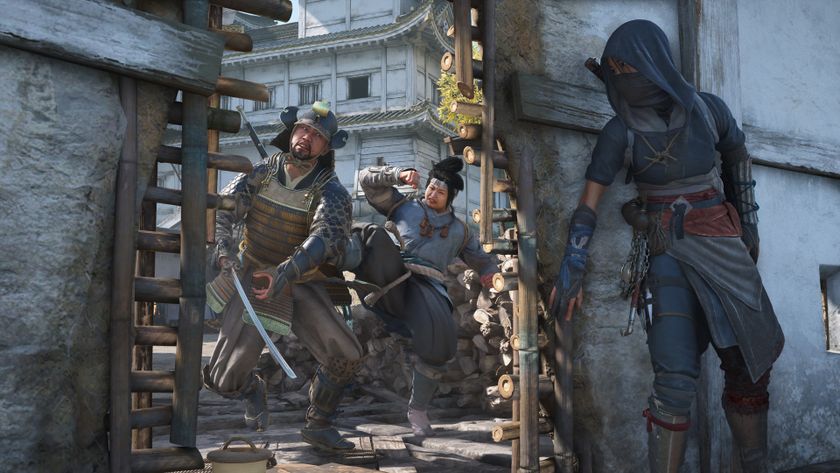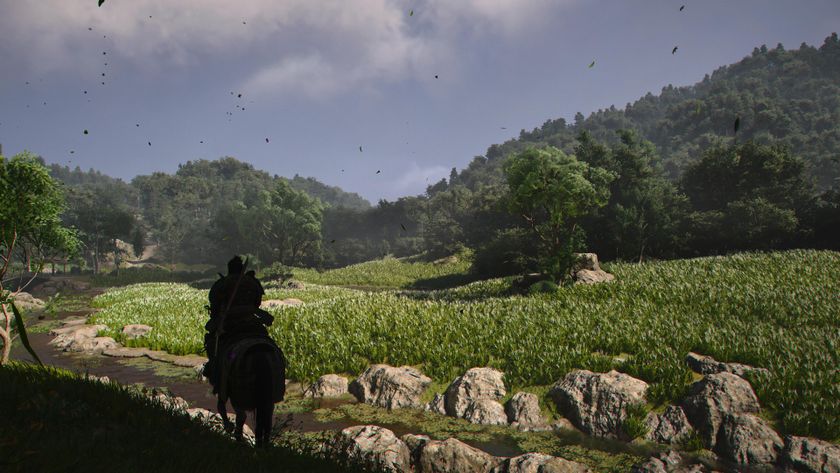Also of note is the 'drop in, drop out' twoplayer dynamic, which allows a second player to enter or leave the action on a whim. There are always between two and six possible player characters on screen, and pressing Start drops player two into one of their bodies. If they'd rather play a different part they can approach their choice of host and transfer their spirit with the triangle button. The same goes for player one, of course, which is how they can solve the multi-character multi-skill puzzles. The AI of the rest of the party is smart enough but it's essentially static, not progressive - it will do the minimum required to keep itself alive, and shadow your progress through the level intuitively, but it won't solve puzzles or rout enemies.
With such a strong emphasis on a wide range of characters, much thought was put into how the instantly recognisable Lego minifigures were to be recreated in a game. Initially animated in a similar fashion to the comedic (funny-cos-they're-rubbish) Lego stop-motion videos that pop up across the internet from time to time, Traveller's Tales soon decided on something more organic. "It was pretty obvious we weren't really going to be able to stick with plastic," explains Jeremy Pardon, Lego Star Wars' lead animator. "That worked better, creating characters rather than just copying the minifigs. I mean, there were technical problems anyway - the plastic was built to work and function in a certain way, which as a character it doesn't necessarily do. A good example is if you open their legs, they actually have something in the middle, and it starts to look... ummm..."
Lego Star Wars' minifigs have a sort of flexibility that's absent from the figures on which they're based, knee joints flexing as if the legs were made of soft rubber, plastic hairstyles flopping comically with their owners' motion. The painted-on facial expressions are beautifully animated, too. If other Lego games have shown how Lego would look if animated with Thunderbirds-style strings, this is Lego done by Pixar, flexible and emotive, almost inevitable when you consider that the team's last game was Finding Nemo.
"Actually, when we started, we hadn't even finished Nemo, had we?" grins Pardon. "And we were doing the first demo of the game. My producer on Nemo wasn't very happy. There were a few weeks left on that project, just kinda fixing bugs and stuff, but we were all so excited at the new project, at the prospect of being able to play with Lego basically, that we just cracked on and built... well, we had half a dozen characters, a speeder bike, stormtroopers. Helped by lots of Lego."
How did the Lego designers react when they first saw their creations moving? Smith interrupts. "They were just blown away, everyone, right from the start, right from the first minifigure they saw move around. Everyone just said: 'That is 100 per cent right'." Was that because they had pretty low expectations? "They had no expectations. None whatsoever, because they didn't know what we were going to do. At all.
"But the results were spectacular, and proved what we'd been hoping for: that these characters could come to life as videogame characters. That the world in the imagination of a child or adult - becoming a child for a moment as they play with the Lego and live out that story - could come to life in a really cool way."
Sign up to the GamesRadar+ Newsletter
Weekly digests, tales from the communities you love, and more
If you want an illustration of exactly how cool that cool way is, take the short, sharp cut-scenes. Linking the action, they compress Lucas's newly verbose storytelling into tiny, expression-filled silent movie-style bulletins. At the end of Episode One - and this is spoiler territory for those who've been living in a hole for five years, so beware - Darth Maul's final, fatal fight with Qui-Gon and Obi-Wan is jammed into 20 seconds of supercute lightsaber dancing. When Maul falls, split asunder at the waist into his two minifig parts just as a real Lego minifig would, you can see just how well they've captured the essence from both universes - the joy from one, the character from the other - and have created a third.
Or, as Smith explains, it's about ignoring theoretical convention and returning to Leg Godt: "If this was a mission to clone those plastic toys and represent them in a videogame, we would have all kinds of challenges from a technical perspective, to try and make that fun. But the mission, right from the start, was to say: 'What's the game of Star Wars Lego going to be like? What, in that currently existing plastic world, can we draw upon to make that game?' But if new stuff needs to be created to bring characters to life in this imaginative world, we are at liberty to make those changes. The Lego ethos is bigger than any one particular representation."
That's difficult to disagree with. But how will Giant persuade Edge readers that this is the one? That this is really, actually, genuinely going to play well? Smith's three-stage answer is simple. Stage one: "We would show it to them." Stage two: "And they would play it." Stage three: "And they would enjoy it."
Right now, we've got no reason to suppose he's wrong.
Lego Star Wars will be crossing lightsabers on PS2, Xbox, PC and GBA in April 2005

Assassin's Creed Shadows devs "actively looking at" an even harder difficulty mode for the RPG: "How challenging do you want it?"

Assassin's Creed Shadows' delays were mostly used to polish the RPG, creative director confirms, not for deeper changes brought about by Star Wars Outlaws reaction











